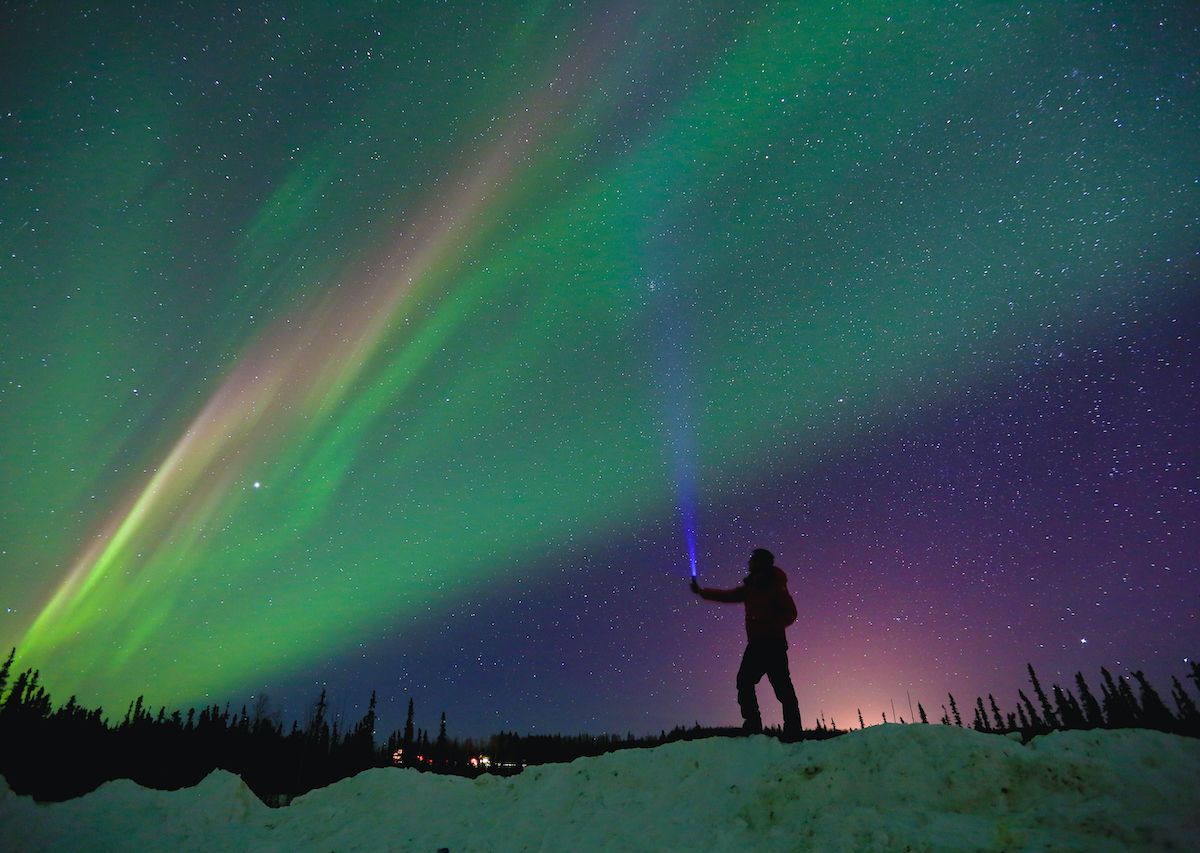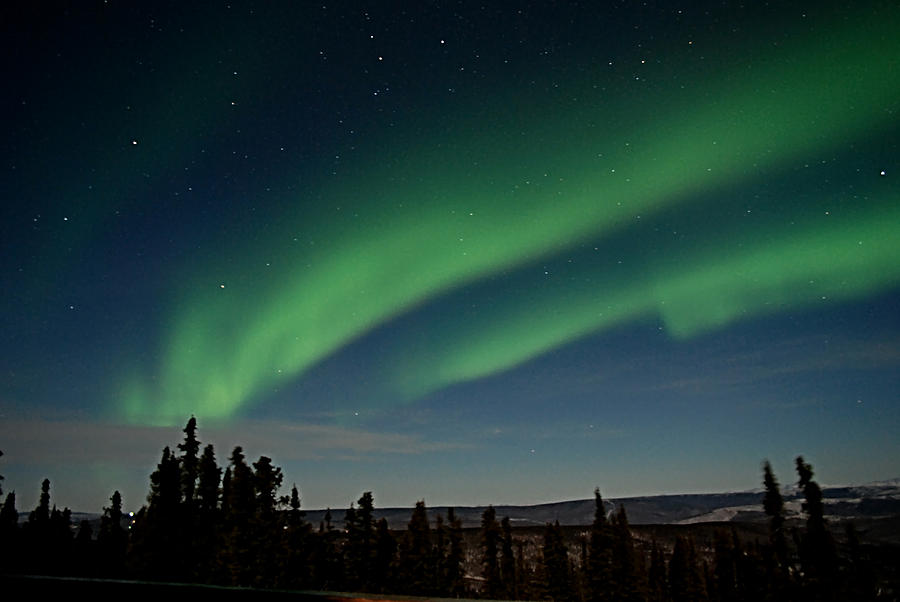

Auroral activity also tends to be higher around the fall and spring equinox due to the Earth’s tilt. In the years closest to solar maximum (the next is in 2024), Northern Lights displays are more abundant and vibrant, whereas they’re more sluggish during solar minimum years. There’s an 11-year cycle that has long predicted when the lights would be most active. The next few years should be good for geomagnetic activity. That information is available from the University of Alaska Fairbanks Geophysical Institute, along with a 27-day aurora borealis forecast.

The larger the number, the better the odds (anything above a four is considered “high activity”). Scientists measure the general likelihood of visibility on a scale of zero to nine, known as the Kp Index. The more active the storms on the sun are, the more active the displays on Earth are. The mixing of the particles and gases causes the lights.

In essence: The sun shoots electrically charged protons and electrons toward our planet, and when those elements collide with the Earth’s magnetic field, they’re drawn toward the poles, a move that excites the gases in our atmosphere. Although the lights happen year-round, it’s only dark enough to catch them from early fall to early spring in much of Alaska.Įven if conditions are right, it’s hard to predict when the dancing lights will take the stage or what magnitude it will be at. The best time to see the Northern Lights in Alaska is between September and April. Best time of year to see the Northern Lights in Alaska Here’s how and where to see the Northern Lights in Alaska. In interior Alaska, the colorful lights are visible on 80 percent of clear nights during prime viewing season. travelers think they need to go to Norway or Iceland to catch the solar-powered fête, but they could see them without leaving the country. When activity is lower, the hues lean green, teal, and opal, but when it’s higher, it skews magenta and violet. They can be displayed as bands, curtains, rays, or coronas. Some last only minutes others go on for hours.
NORTHERN LIGHTS FAIRBANKS ALASKA HOW TO
For more on how to dress for winter pursuits, watch this video.Seeing the aurora borealis, otherwise known as the Northern Lights, is bearing witness to a sublime natural phenomenon, where during the coldest months of the year, kaleidoscopic ribbons of colored light ignite the night sky. Rely on synthetic, wool, and fleece materials, especially in the winter. Layers, layers, layers and dress warmly! You will likely be out in the elements for extended periods of time. An intense aurora can get a purple or magenta edge. The aurora takes on different shapes such as curtains, bands, rays and coronas. Visitors will most typically witness a swirling array of green, teal, and white. What colors will I typically see on my visit? See below for accessible spots around Fairbanks.

You can view them from a heated “aurorium” cabin or lodge, see them on a dog sled adventure, on a snow cat tour, via a trip part way up the Dalton Highway or even on a flight above the Arctic Circle. Or perhaps you want to go fishing while you wait and go on an evening ice-fishing adventure on a local lake! All of these are great options, or if you are a do-it-yourself adventurer, you can drive to a nearby vantage point and wait for them to appear. There are so many different ways, but a great way is to take a northern lights tour with a guide. The northern lights are so prolific in the Fairbanks region and the Arctic that visitors who stay a minimum of three nights and are actively out during the late evening hours increase their chance of seeing the aurora to more than 90 percent! How can I see the aurora? Am I going to see the aurora if I visit Fairbanks? Scientifically speaking, the aurora is dancing above year-round, but we can only see it during the Aurora Season when we have dark enough skies. When is the best time to see the northern lights?įairbanks’ Aurora Season is from August 21 to April 21 and the aurora will be visible in Fairbanks an average of four out of five nights when the sky is clear and dark enough. All combined these variables make the Fairbanks region an outstanding destination for possible aurora borealis viewing. View the wonder of the northern lights in Fairbanks with this short video!Īurora Viewing FAQs Why is Fairbanks such a great place to view the northern lights?įairbanks’ location is ideal for northern lights viewing because it is under the “Auroral Oval,” a ring-shaped zone over the far north where aurora activity is concentrated. Additionally, Fairbanks’ low precipitation and distance from coastal areas contribute to consistently clear nights.


 0 kommentar(er)
0 kommentar(er)
